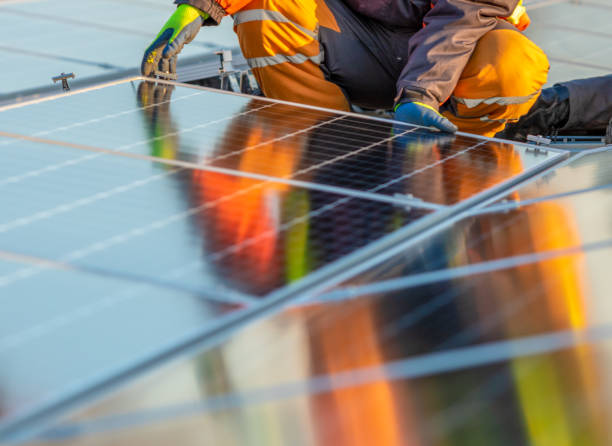
Solar energy is an eco sustainable, renewable option to fossil-fuels. What is the role of solar energy to lower electric costs?
Photovoltaic panels convert sunlight into electricity. The sunlight that hits the silicon semiconductor material, energizes and then releases electrons. Metal gridlines within the cell absorb electrons that are directed to an inverter, which produces electricity.
Solar Panels
The Sun continually emits huge amounts of energy forms of electromagnetic radiation (EMR). Solar panels are designed to absorb this energy and convert it to electricity.
Edmond Becquerel discovered the process in 1839 when he discovered the process. When light strikes your solar panel, it activates silicon cells that convert sunlight to direct current electricity.
The cells are generally covered with conductors made of metal as well as encased in glass with negative and positive terminals that form your solar panel. The electrical energy is channeled into the inverter via a conductive cable. This is an essential element of your system as it converts DC electricity into alternating current, which powers your home or other devices.
Monocrystalline solar panels tend to be more efficient than polycrystalline. Both are composed of silicon. However, monocrystalline solar panels possess a greater effectiveness than polycrystalline. This is due to the fact they use a single silicon crystal instead of smaller pieces of silicon.
Solar Batteries
Solar batteries make up an integral part of solar system and are a vital part of the storage. If the grid goes out, failure, they provide power for your home.
The photovoltaic effect happens in the event that sunlight strikes the semiconductor of a solar panel (typically silicon). The electrons then release and flow across wires, down the panel, to a junction, and finally into a charge controller. These charge controllers ensure that the cells aren't charged too much or exhausted too quickly which can reduce their longevity and maximizing their efficiency. When you demand to find out details on solar energy, you have to sneak a peek at https://www.solarboxlondon.org site.
There are four types of solar batteries currently available: lead-acid lithium Ion, nickel Cadmium and flow battery. Lithium ion has emerged as the dominant battery type in solar power systems due to its long cycle time, durability and cost-effectiveness.
Solar batteries also provide energy during peak hours, typically on weekdays, especially in the mornings and evenings. The homeowners can avoid paying the higher electricity costs that some utility companies have to cost.
Inverters
Photovoltaic solar panels, also known as PV modules, or PV cells transform sunlight directly into electricity. Inside each cell is a tiny semiconductor wafer that has two layers. One has positively charged electrons (N) while the second is filled with boron so that it has positively charged atoms (P). If light energy strikes on the cell, it causes an electric field that is created between both sides of the. This force pushes electrons that are loose from silicon, causing an electric current.
The solar inverter absorbs the DC electrical energy and transforms it into alternating current (AC) power, which is what power refrigerators, sump pumps and other household appliances. The inverter could be used for the whole system, or microinverters that connect to every panel.
Inverters are also able to provide grid services, like reactive power. On the electric grid, voltage (the force that pushes electric charge) as well as the current (the movement of that charge) need to be in sync, or else electricity cannot move as smoothly. Inverters can absorb or provide reactive power depending on the need. This allows for balancing variations in the grid.
Grid-Tied Systems
Sunlight produces a large amount of energy as electromagnetic radiation. Solar panels collect this EMR and turn it into electricity usable through allowing the particles of sunlight known as photons to free electrons and from their respective atoms. The result is a flow of electric energy that could be used to power your home.
In the peak hours of daylight grid-connected systems often produce more electricity than they actually need. The excess electricity can be return to the grid. In accordance with the regulations in your region for "net-metering" it is possible to be eligible for credits that will reduce the cost of your bill each month.
Grid-tied systems are the most popular kinds of solar panels currently in use, mostly due to their low cost. However, they do come with some disadvantages. They are for instance Grid-tied systems can only be partly self-sufficient and need an additional power source. To learn more look up our solar calculator as well as FAQ page for more details.

Kommentera